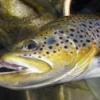-
Posts
697 -
Joined
-
Last visited
-
Days Won
1

Conor replied to jonny5's topic in On The Water - Fishing Related

Conor replied to birchy's topic in On The Water - Fishing Related

Conor replied to j5ep00's topic in On The Water - Fishing Related

Conor replied to birchy's topic in On The Water - Fishing Related

